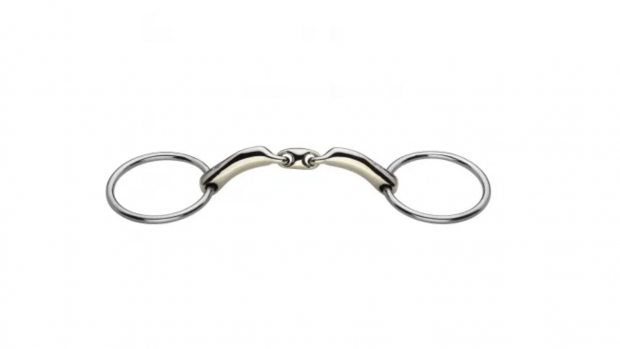Though most heavyweight hunters are shown in the traditional double bridle, Bill Bryan’s On Approval prefers a light jointed pelham.
“He’s got a mouth like silk and finds two bits in his mouth too heavy,” explained Bill, who has been a mastershowman for many years. Bill recalls how the Bryan family found the answer to problems they were having with the young “Thomas”, as Jill Ashmole’s winner of countless championships is known at home.
“He’s a big horse standing 17.1hh and, as afour-year-old, he would lean on a double bridle. We couldn’t seem to get him going really kindly in anything and he was over enthusiastic during the gallop in the ring.
“Not long before Wembley, I came home one day to find that Thomas had run through the hedge with my son Willie – we were at our wits end.
“A neighbour said that she had an old bit hanging up at home that might do the job. She returned with this ancient split pelham that must have been at least a million years old. Just to please her, we tried it. Thomas loved it and we’ve never looked back, being beaten by only one point at Wembley a few weeks later. Nowadays, I only use a double bridle when I have to.”
The pelham is often seen as something of a compromise, combining the action of the snaffle with the curb and is particularly favoured by horses with small mouths. The action is usually mild, provided the top rein only is used. With the lower rein, there is additional pressure on the bars of the mouth and the poll and chin groove as the curb chain comes into play.
Jointed pelhams can be purchased from most good saddlers.



